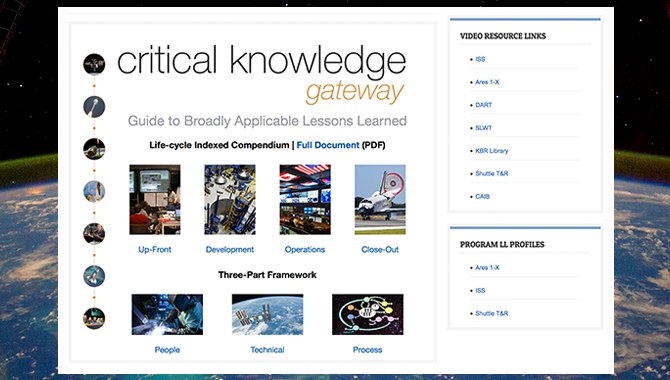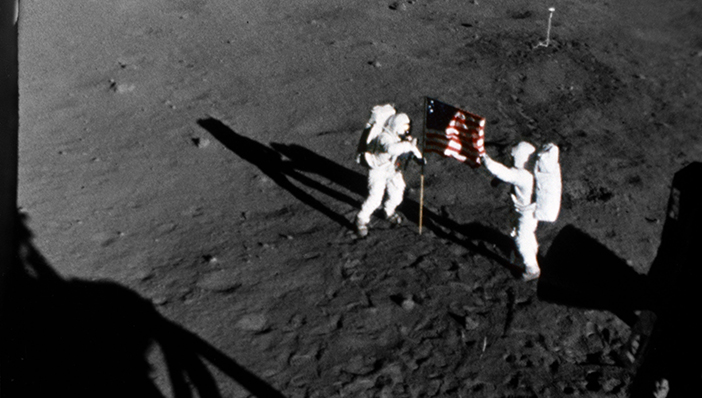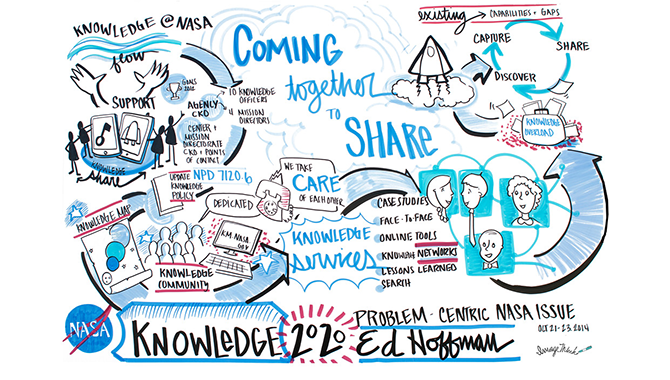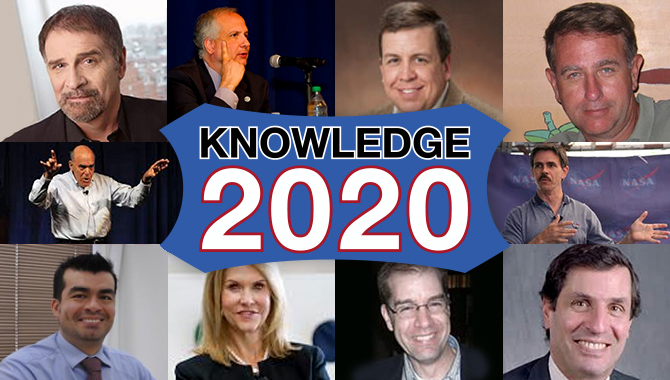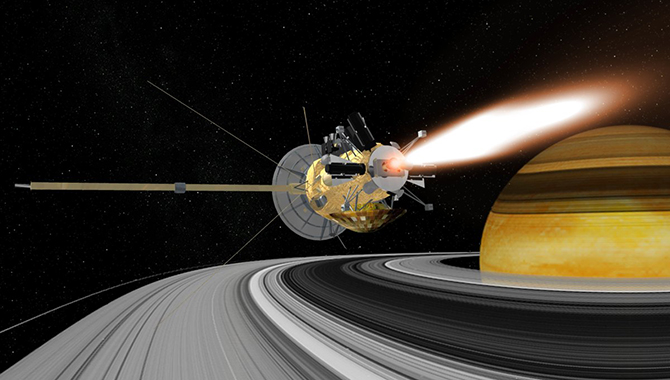
Cassini inserts itself into Saturn’s orbit for a five-month rendezvous.
Image Credit: NASA/JPL-Caltech, David Seal
As school children, one of our earliest lessons in astronomy is this: all of the planets in our solar system—with the notable exception of the Earth—bear the names of Roman gods.
It follows that no one should really be surprised that NASA named several of its earliest missions after Roman deities. New immortal monikers from other world mythologies are now pinned to their own corporeal bodies in the sky. There are Gallic, Inuit, and Norse groups of moons around Saturn, and since 2004, the continuing missions of Cassini have returned a wealth of data about these moons orbiting that ringed childhood favorite.
Unlike the field of astronomy, the field of knowledge management has yet to build a tradition of naming conventions. At its frontier, knowledge management is concerned with discovering new ways of capturing and sharing. At its core, knowledge management does have its own terms. A relevant example: there’s explicit knowledge and tacit knowledge. Explicit knowledge is easily written down, transmitted, and transferred. Tacit knowledge requires knowing in terms of ability and of use, necessitating all kinds of information not plainly known or even understood. Consequently, tacit knowledge is far more difficult—if not occasionally impossible—to share. If knowledge management practitioners were to assign names from mythology to these two types of knowledge, the two ravens in service to Odin, the father figure in Norse mythology, might suit them well.
Huginn and Munnin—like black-feathered satellites—fly around the world, bringing Odin the knowledge he needs to be the wise father to the pantheon of often unruly Norse gods. Scholars often point out that “Huginn” means “thought” while “Muninn” means “memory” in Old Norse. A thought or a string of them, such as a logical argument, can be expressed explicitly to another person. A memory, however, is more unmanageable, more inexpressible in its delivery, especially those attempting to explain a skill—as in “muscle” memory—on just how to do something. In mythic fables as well as the visual arts, Odin has both birds, perched and reporting on his shoulders, to keep his head held up and on straight, this final authority on the ruling of the world of the Norse. One tale recounts that Odin—fearing he has lost both birds—yearns more for the safe return of Munnin.
The transference and intersection of tacit and explicit knowledge are indispensable for knowledge to truly serve and support an organization, especially one such as NASA, which is highly federated in its structure and highly technical in its missions. Recently, NASA Administrator Charles Bolden shared an important message on safety, relaying that it is Technical Authority—in engineering, safety and mission assurance, and health and medical—that plays the greatest role in NASA’s decision-making processes. The term Technical Authority refers to both the role and the process of applying our best specifications (always explicit) and best practices (sometimes tacit) to maintain technical integrity of programs and projects.
Bolden states, “Each one of us is responsible for conducting our communications and meetings in a team environment to ensure the views of all are solicited, heard, and valued.” Charlie Bolden may be luckier than Odin. NASA has many reporting voices. Of course, not all voices can be heard at once, but as Bolden shares, “NASA supports full and open discussion of all types of issues: for disagreements that rise to a level of importance, that warrant a specific review and decision by higher management, we have formalized alternate paths to bring concerns forward that can—when necessary—lead all the way to my office. I depend on Technical Authority to help provide me a total view in order to understand and consider issues from different perspectives.”
Bolden expounds, “Technical Authority offices work with programs and projects on a daily basis to determine which requirements apply to a given mission and whether they are being met.” He adds, “Center Directors also have delegated Technical Authority responsibilities and establish center policies and practices consistent across the Agency.” Bolden urges all at NASA to seek more information on Technical Authority in the NASA Governance Handbook, in program management guidelines, and in other detailed documents within NASA organizations.
“If we do these things, we will continue to succeed,” Bolden concludes. “If we fail—it won’t be because concerns were not heard or we were not informed, but because we collectively contemplated the risk of a particular matter, were comfortable with it, and decided that the risks were worth taking.” In short, Technical Authority allows us to manage risk insofar as we manage knowledge.
If we consider Mercury—the planet, the element, or the NASA missions—the messenger god might flash before our eyes. Although he wore little, he did don a winged helmet, to give him his speed of body and thought. We remember that wings and feathers appear in the headdress of almost all cultures on Earth. And if we recall that Mercury is the Roman for the Greek god Hermes, we come full circle: hermeneutics, from the Greek, refers to the theories of knowledge.






